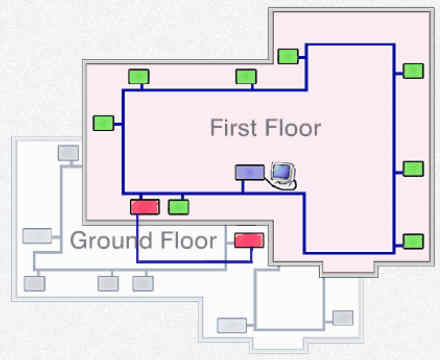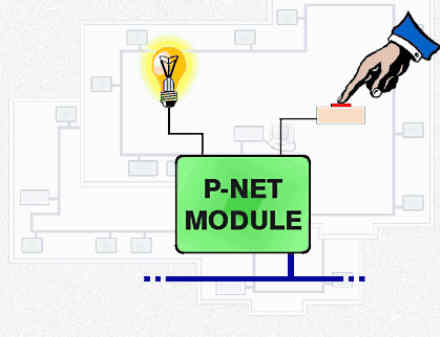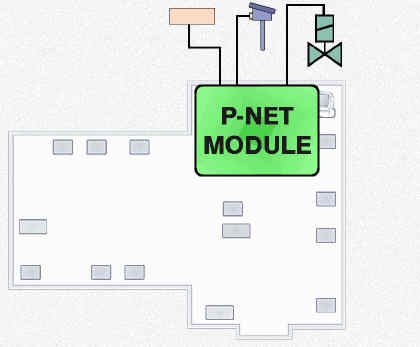


 |
 |
 |
|
|
|
|
||||
| Main functions |
| In general terms, the principle of the automation of the building, is that the “intelligence” is distributed throughout the whole structure. Individual sensors, actuators, relays and other elements, are connected to P-NET interface modules, which are placed around the building, and housed in boxes on the walls. This leads to a minimum use of cabling. The majority the P-NET modules are of the PD 3221 Universal Process Interface (UPI) or PD 3120 Digital I/O type. All P-NET modules are connected together via the P-NET fieldbus, and all are also connected to a common Power Supply Unit having battery backup. |
 |
| The P-NET structure is divided into two separate sections, one for each floor. Communication between the two P-NET sections is achieved through a routing (dual port) master. The division of the system contributes to the well known high level of integrity of the P-NET fieldbus. This ensures that a fatal error on the one P-NET section doesn’t affect the other. |
 |
|||||
| To control and supervise local functions, a calculator program can be downloaded to the various modules. PD3120/PD3221 are slave modules. All related inputs and outputs are therefore, as far as possible, connected to the same module, thereby enabling the module to carry out autonomous functions. This means that a central computer need not constantly scan the inputs and outputs, and therefore no unnecessary load is put on P-NET communications. |
 |
|||||
|
|
|
|
||||
|
|
International P-NET User Organization
P.O. Box 192DK-8600 Silkeborg Denmark |
 Send us an e-mail |